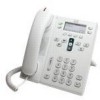Cisco 6941 Administration Guide - Page 93
numbers or Personal Address Book entries. See, Button Template for Personal Address Book or - busy trigger
 |
UPC - 882658277801
View all Cisco 6941 manuals
Add to My Manuals
Save this manual to your list of manuals |
Page 93 highlights
Chapter Telephony Features Available for the Cisco Unified IP Phone Table 5-1 Telephony Features for the Cisco Unified IP Phone (continued) Feature Fast Dial Service Forced authorization codes (FAC) (SCCP phones only Group call pickup Hold Reversion Hold Status Hold/Resume Hunt Group Description Configuration Reference Allows a user to enter a Fast Dial code to place a call. Fast Dial codes can be assigned to phone numbers or Personal Address Book entries. (See "Services" in this table.) For more information, see Modifying a Phone Button Template for Personal Address Book or Speed Dials, page 5-18. Controls the types of calls that certain users can place. For more information, see the Cisco Unified Communications Manager Features and Services Guide, Client Matter Codes and Forced Authorization Codes. Allows a user to answer a call that is ringing on a For more information, see the Cisco Unified directory number in another group. Communications Manager Features and Services Guide, Call Pickup. Limits the amount of time that a call can be on hold before reverting back to the phone that put the call on hold and alerting the user. Reverting calls are distinguished from incoming calls by a single ring (or beep, depending on the new call indicator setting for the line). This notification repeats at intervals if not resumed. For more information about configuring this feature, see the Cisco Unified Communications Manager Features and Services Guide, Hold Reversion. A call that triggers Hold Reversion also displays an animated icon in the call bubble. You can configure call focus priority to favor incoming or reverting calls. Enables phones with a shared line to distinguish between the local and remote lines that placed a call on hold. No configuration is required. Allows the user to move a connected call from an active state to a held state. • Requires no configuration, unless you want to use music on hold. See "Music-on-Hold" in this table for information. • See "Hold Reversion" in this table. Provides load sharing for calls to a main directory number. A hunt group contains a series of directory numbers that can answer the incoming calls. When the first directory number in the hunt group is busy, the system hunts in a predetermined sequence for the next available directory number in the group and directs the call to that phone. For more information, see the following: • Cisco Communications Manager Administration Guide, Hunt Group Configuration. • Cisco Unified Communications Manager System Guide, Understanding Route Plans. Cisco Unified IP Phone 6921, 6941, 6945, and 6961 Administration Guide for Cisco Unified Communications Manager 8.5 (SCCP and SIP) OL-23769-01 5-9















